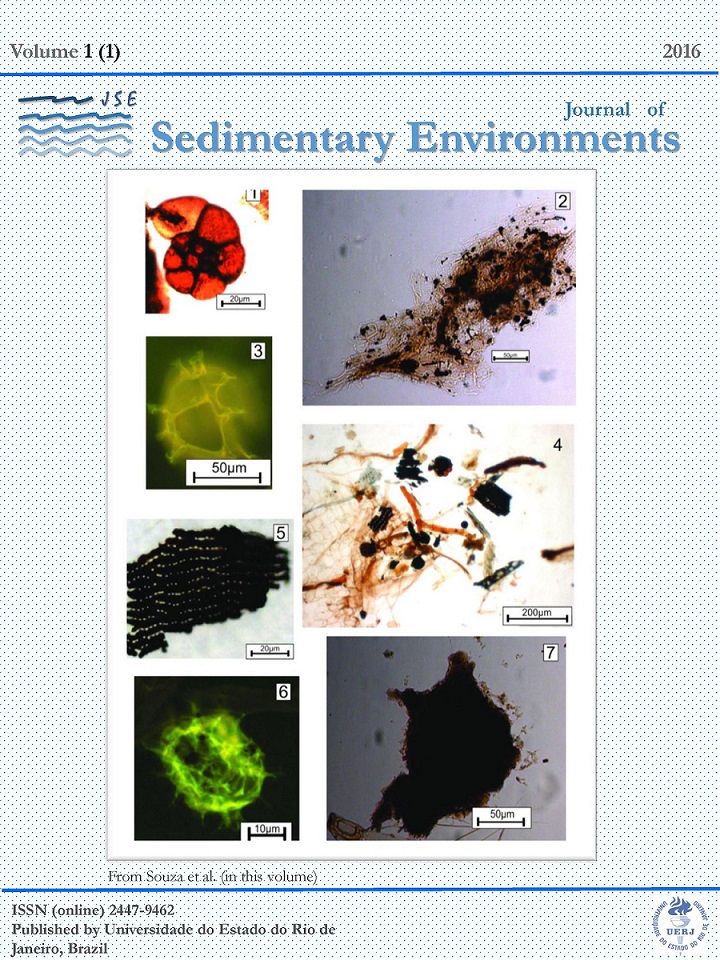TAPHONOMIC ASPECTS OF DEER (MAMMALIA, CETARTIODACTYLA, CERVIDAE) REMAINS FROM A QUATERNARY CAVE DEPOSIT IN NORTHERN BRAZIL
DOI:
https://doi.org/10.12957/jse.2016.23026Keywords:
Taphonomy. Paleoecology. Cave deposits. Cervidae.Abstract
This work identifies and interprets taphonomic features of the deer fossil assemblage recovered from the Gruta do Urso cave, located in Tocantins State, Northern Brazil. Consequently, its results shed light on the origin of the vertebrate assemblages in cave deposits and paleoecological aspects of Quaternary deer of northern Brazil. The cervid fossil accumulation of the Gruta do Urso cave includes individuals of three species that died outside the cave and, then, underwent disarticulation and weathering during a time span between one and five years. During the necrolysis, they experienced scavenging by large-sized felids and small-sized canids. Then, the disarticulated remains and a mummified hindlimb were transported into the cave by multiple events of low-energy hydraulic flows. Inside the cave, some specimens experienced exposure on the water table and incrustation. The biostratinomic data suggest the taphonomic history of deers around Gruta do Urso cave occurred in arid conditionsDownloads
Issue
Section
Research article
License
The copyright of articles published in Journal of Sedimentary Environments (JSE) belong to their respective authors with rights to first publication conceded to the journal. Every time that the article is cited and reproduced in institutional repositories or personal and professional web pages the link to the journal web page must be provided.

Journal of Sedimentary Environments (JSE) is licensed under a Creative Commons Attribution-Noncommercial-Share Alike 4.0 International License.

